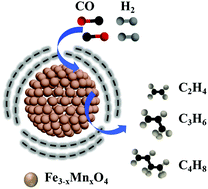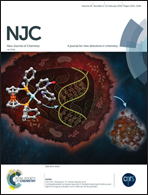Carbon-encapsulated highly dispersed FeMn nanoparticles for Fischer–Tropsch synthesis to light olefins†
Abstract
Highly dispersed FeMn nanoparticles were encapsulated with a carbon layer to form a core–shell structure. This catalyst (FeMn@C) exhibited distinguished catalytic activity, high light-olefin selectivity (40.6%) and superior stability in the Fischer–Tropsch synthesis. Furthermore, it was revealed that the carbon layer facilitated the formation of χ-Fe5C2 with suitable particle size, which is responsible for the enhanced catalytic activity. In particular, the core–shell structure of FeMn@C could also influence the distribution of hydrocarbons and the catalyst stability due to the confinement effect.



 Please wait while we load your content...
Please wait while we load your content...